AudioCulture
The noisy library of New Zealand music
Te pātaka korihi o ngā puoro o Aotearoa
Bruce Russell
The Bats’ Robert Scott, Kathy Bull, Kath Webster and Lesley Paris of Look Blue Go Purple and Nick Wilkinson of The Alpaca Brothers I know by sight, having seen their groups play. But I can’t put a name to the guy seated out to my right with a beret slouched over his head and sideburns falling to his chin, although he is clearly well known here. I’ll learn soon enough that he’s Bruce Russell and he has a new group called The Dead C. Still, I can’t shake the feeling I’ve seen him somewhere before.
Having spied Chippendale House’s hui ad in Critic, the University of Otago student newspaper, I’ve dragged my Paeroa friend Peter along to get involved. My friends and I are no strangers to the large co-op arts venue up the sharp rising Stafford Street south of the Octagon, having been regulars there at musical events in mid-1986.
Chippendale House was established in July 1985 by a group prompted by the artists Andrew Drummond and Stuart Griffiths and was well into its second year (of four) as a co-operative theatre, music and gallery space.
Look Blue Go Purple, The Verlaines, The Alpaca Brothers and The Puddle and many of the city’s rising and established bands graced its low, flat stage. Visiting acts of a similar mind, including Roy Montgomery, Bird Nest Roys and The Pterodactyls, also stopped in. There’s a $10,000 sound system paid for by the establishing grant and accommodation for visiting musicians with secure storage available on the premises.
This Sunday afternoon, it’s all business. The city council’s representative is holding up the organisation’s generic membership card. He’s concerned about the circular banner that partly encloses and confines the jester that is their symbol. “Shouldn’t the raised arms be free like the co-operative and the creative instinct?” he asks.
With that pressing concern aired, the remaining items are discussed. PEP scheme funding for the group’s workers and the idea of a café just inside the entrance to the multi-storey building are canvassed and daily rosters organised, then incense is lit and a joint passed.
Soon afterwards, The Dead C’s Michael Morley, whom I know from the Wreck Small Speakers On Expensive Stereos tapes that I’d been ordering up north, spots Peter and I near one of the old stone block churches that dot the inner city. He hails us from across the street and hands over a green screen printed poster with what looks like black cavemen etchings that announces The Dead Sea and Early Carvings afternoon show at Chippendale House on Sunday April 24.
There’s a wilful art edge underlying everything; an anarchistic response to the relatively formed work of the city’s leading post-punk acts.
Early Carvings has Mike Stoodley, who’ll become an in-demand sound engineer and latter day Verlaines bassist. The Dead Sea features current Verlaine Robbie Yeats on drums with Bruce Russell manipulating sound from one guitar through an amp that looks like an old TV turned backwards and Michael Morley singing faintly and playing another guitar.
What songs there are Morley keeps going with a simple open chord riff under – and over which Russell shows his faith in drone, discord and looping repetition. They fill that oversized warehouse up with songs coming out of songs. There’s a wilful art edge underlying everything; an anarchistic response to the relatively formed work of the city’s leading post-punk acts.
Another friend, Ray, soon snags a copy of The Dead Sea’s (as they are briefly named) first tape (one of only 21 made) released on Diabolic Root from Roy Colbert’s Records Records on Stuart Street up above the central city Octagon.
The Dead Sea Perform Max Harris was captured at the trio’s first live outing in March 1987 and swam around in a single sized Morley lino-cut printed sleeve. The key track is a near freeform Krautrocker that ebbs and flows with spaced sound and percussion and captures their live sound well.
Three years
Scanning the scrapbooks I’d kept obsessively since 1980, I found Bruce Russell’s writing and presence already there. A Chris Knox review of an A Handful of Dust tape A Fortnight Dead (available from 154 Forth Street in Dunedin for $3.50) had Russell as “the long lost missing link between Sam Hunt and Fetus Productions. Guitar, tapes and a good line in speed-poet lyrics are the essentials which when they gel are worth several listens.”
Bruce Russell reviewed The Rip at Dunedin’s Empire for RipItUp’s April 1984 issue.
The brightly mohawked writer had shared stages with his flatmate Alastair Galbraith’s band as The Coonskin Kid or A Handful of Dust.
“He made guitar noises, alternately curdling and abrasive over which he declaimed long written works in a monotone that rose to a shout,” Galbraith wrote of those days in the preface to Bruce Russell’s 2009 collection of critical, theoretical and documentary writing Left Handed Blows.
In 1985 the University of Otago student newspaper’s Audience Guide to Dunedin Bands pointed fans towards “Pink Plastic Gods – one of several names for a grouping whose repertoire include the poetry of Bruce Russell, the songs of Michael Morley and Robert Scott and the bass playing talents of Richard Ram. With some others, they make up Pink Plastic Gods and Wreck Small Speakers on Expensive Stereos.” In other words two thirds of The Dead C were already creating together.
You’d find Bruce Russell examining a wide variety of sound, both local and overseas in Dunedin’s Garage fanzine. S.E.P – Haunted Spirits was ostensibly a review of Scorched Earth Policy’s Dust To Dust EP although the full-page piece takes in the group’s pre-history in The Pin Group and Victor Dimisich Band complete with discography.
Russell turned in an assured full-page piece on new Dunedin group, In A Circle and reviews of Scorched Earth Policy and Say Yes To Apes live at Christchurch’s Zetland alongside evaluations of records by future collaborators’ Roy Montgomery (The Shallows) and Peter Jefferies (This Kind of Punishment) for the next issue of Garage.
I first heard Bruce’s music and words when A Handful of Dust’s ‘Breaks Unaware’ was included in 1986 on the Robert Scott compiled Whistle Up A Wind Dunedin compilation tape.
Small creative communities, co-operative endeavour, words and challenging guitar sound, and writing with a historical and archival bent and local underground focus? Well before The Dead C and Xpressway Records, many of the component parts of Bruce Russell’s creative life and worldview are already clearly in evidence.
In 1986 the poet/ guitarist left for England. That’s why he’s absent from Garage’s fifth issue. He returned in number six documenting The Bats' first trip to Great Britain and Europe and cocking a discerning ear over fine records by rising British and US indie acts The Weather Prophets, Shop Assistants and Opal.
On the live front, Bruce Russell will see and review Felt, Alex Chilton, The Jazz Butcher, The Razorcuts (with Mainly Spaniards’ David Swift on drums), Microdisney, The Go Betweens, The Servants, Sonic Youth, Jesus and Mary Chain, The Turncoats (with The Exploding Budgies’ James Murray on drums), Ivor Cutler and Thomas Mapfumo and The Blacks Unlimited. That’s a large slice of the relevant indie label groups in Great Britain right there most of whose records were available in New Zealand on import.
On his return to Christchurch later that year, he joined Flying Nun Records in Christchurch as a volunteer publicist and intern. One of Russell’s jobs was sorting the label’s fanzine library. There he found the traces of indie networks in the United States, United Kingdom, Germany and France. It was a broad and geographically diverse strand of small-scale indie music-related activity he’d soon find a ready use for.
Come January 1987 and Bruce Russell is back in Dunedin. By the end of the year, The Dead C, Xpressway Records and a new Dunedin-based fanzine Alley Oop are a reality or will be soon. One of the most important and interesting in phases in New Zealand’s independent music history had now begun.
Crazy I know
There’s already a Dead C album (DR503) in the works barely four months after Michael Morley recruits Bruce Russell and flatmate drummer Robbie Yeats for a trio, who feel and hear an immediate chemistry.
This Kind Of Punishment’s Peter Jefferies captured the dynamic of an early Dead C performance at the inner city Burgundy Bar for new Dunedin fanzine Alley Oop. “The first thing that struck was the dual guitar sound. Full and powerful (without being merely “overbearingly”), the two formed a unified, yet clearly defined whole.
“Michael Morley deals with the more melodic area of things (he’s playing the tune of the songs) while Bruce Russell uses his guitar in a melodically minimal, almost percussive way, hurling large slices of distortion fuelled dynamics into the sound.
“Often the tune coming from Morley was supplied with a drum rhythm in broken or counter-timings with Russell’s guitar holding the “true timing of the piece” with precise atonal slashes placed where the snare drum would usually be played. This allowed Robbie Yeats full reign on the placement and structuring of his drumming and he gave a truly outstanding display of innovative rhythms repeatedly defying the standard ‘1-2-3-4’ pattern that is usually the basis of rock music.”
The Dead C was onstage again in October with The Terminals at Chippendale House, an outing reviewed by Richard Langston for the second issue of Alley Oop. The new Xpressway connection is equally evident in Bruce Russell’s review of Alastair Galbraith’s Plagal Grind at the Dunedin Public Art Gallery, The Rip’s Stormed Port EP, Wreck Small Speakers on Expensive Stereos’ River Falling Love EP and This Kind of Punishment’s In The Same Room LP, all parting shots for the groups on Flying Nun Records.
When DR503 finally drops on Flying Nun Records in April 1988, it is a wilful anarchistic record like no other the label has released. Fans have already heard a different version of the album’s ‘Three Years’ on the new Xpressway Records tape imprint’s early defining Xpresssway Pile Up cassette.
Eusa kills
Frustrated and diminished by Flying Nun Records’ narrowed commercial focus, Bruce Russell had teamed up with Peter Jefferies, Alastair Galbraith and Peter Gutteridge to establish the new Port Chalmers based independent label Xpressway at the end of 1987.
The new imprint’s name was taken from Sonic Youth’s ‘Expressway to Yr Skull’ on 1986’s Evol, a song Russell saw the band perform in London. The musically radical Sonic Youth would continue to play an important part in The Dead C members’ creative lives in the coming years.
Tapes from The Dead C (Live Dead C), Galbraith (Hurray On Down), This King of Punishment (Live ’85), Wreck Small Speakers on Expensive Stereos (A Child’s Guide to…) and Gutteridge (Pure) arrived in 1988 and 1989. The mix of re-accessed music and contemporary sound would be typical of the label’s output.
Effectively reviving what had become a moribund NZ indie music format, the label’s tapes exhibited a care and flair in design and presentation and mastering not heard or seen consistently since Paul Luker’s Industrial Tapes in the first half of the decade.
With Peter Jefferies handling the sound side, Bruce Russell was free to mould the label’s image and ethos.
With Peter Jefferies handling the sound side, Bruce Russell was free to mould the label’s image and ethos and establish contacts with fanzines, like minded bands and labels, promoters and distributors in NZ and overseas through international phone calls and letters.
From the very beginning the label’s catalogues, ads and posters project a distinctive aesthetic. Having returned North to Paeroa then university in Hamilton, brother Stu and I were early subscribers to Xpressway’s mail order, eagerly awaiting the catalogues (minor pieces of art in themselves I wish I’d kept – the Hocken Library in Dunedin has copies) and NZ and US records they sold.
The letters and music that Bruce and the label sent out to the newly interested revived the sense of inclusion that Flying Nun Records was losing (especially for those outside Auckland) and began the knitting together of a new indie community in New Zealand and overseas.
“It was a surprise at the time, but I think it did genuinely strike a nerve with people who were interested in that side of New Zealand music, which by that stage had just begun to be out of the Flying Nun orbit,” Bruce Russell told Brendon Fitzgibbon in the January 1992 issue of Stamp.
Not content with rescuing tapes from a dodgy rep, Xpressway Records buffed up what was thought to be another dying medium and released The Dead C’s The Sun Stabbed seven inch EP on vinyl in 1988.
With New Zealand’s record pressing plant now disassembled for shipping to Australia and the CD format on the rise, the defiant act created a sense of continuity with the post-punk explosion of the early to mid-decade.
In the late 1980s and early 1990s NZ groups wanting to issue music on vinyl records faced very real challenges in locating pressing plants overseas.
In the late 1980s and early 1990s NZ groups wanting to issue music on vinyl records faced very real challenges in locating pressing plants overseas (in this case Australia) along with increased expenses (shipping costs in particular) and a loss in control in not being able to closely oversee the project. Those local needs would soon be addressed and answered by the international indie community, but for now the flame still flickered in Dunedin.
The stumbling garage rock of ‘Bad Politics Baby’ in The Sun Stabbed EP’s grooves was a Bruce Russell song from 1984 that was inspired by Alan Vega’s first album. It would later be covered by Yo La Tengo and was still in their set as an encore in May 2000 at Irving Plaza in New York. Peter Jefferies appended it to ‘Guided Tour Of An Unknown Street.’ The EP’s remaining songs’ ‘Crazy I Know’ and ‘Angel’ were Michael Morley-centred songs of fragile beauty.
The Dead C continued releasing albums through Flying Nun Records (Eusa Kills, 1989). It wasn’t always a comfortable situation, as Russell explained to Fitzgibbon.
“They [Flying Nun] were the first people to approach us when we did Eusa Kills. There were few things we wanted to do less than release it through Flying Nun. We recorded the album in March 1989, and by September, Roger [Shepherd] had come around to a position of wanting to do it. He was pestering us. No one else wanted to do it and we signed a deal with him in September 1989 that secured its release some months after. Immediately [afterward] we heard from Siltbreeze Records [a new US indie label].”
Tom Lax’s new Philadelphia indie Siltbreeze Records became The Dead C’s primary label for the next six years and helped gain them a foothold in the United States.
Scarey nest
Bored with university in 1989, Stu and I revived Ha Ha Ha, the Hamilton fanzine I’d first published there in 1983 and 1984. The second grab was inspired by Xpressway’s exciting emergence although we looked back with interest at New Zealand’s punk pioneers and indie labels, and Flying Nun’s early years as well.
In response to the first new issue’s piece on Christchurch underground acts Bill Direen, The Pin Group and Victor Dimisich Band, Bruce fired off a list of corrections. This was an area of interest for him already. The first Xpressway Pile Up compilation included tracks by the defunct Doublehappys and Nocturnal Projections, and its extended and reordered namesake from 1990 on Scottish label Avalanche Records added The Victor Dimisich Band’s ‘Native Waiter’.
Contact established we returned volley with a list of questions about the label and The Dead C. Bruce’s answers were comprehensive and detailed enough to be run in full Q&A form. Xpressway had a reputation for being prickly with the mainstream media and for giving few interviews, which made us doubly grateful for his full response. I’d later read that there was yet another reason for the media reticence. The label and groups wanted to stay below the radar to avoid the attention of the IRD and Social Welfare departments.
In the same issue those long pieces appeared, Ha Ha Ha featured a review of The Dead C’s ‘Helen Said That’, a newly available 12“ EP on Siltbreeze. Bruce liked that one enough to include it in The Dead C’s press release.
Flicking through old copies of NZ Listener in the University of Waikato library, a photograph of the University of Otago’s winning 1980 University Challenge (a TV quiz show that pitted students from the country’s tertiary institutions against each other) team caught my eye. There was Bruce, front and centre. I knew I’d seen his face before.
The Dead C already had the Perform DR503b tape out on Xpressway. The busy label picked up pace in 1988 and 1989 with startling and enduring singles from Peter Jefferies with Robbie Muir and Alastair Galbraith with Graeme Jefferies, and tapes from Victor Dimisich Band and Sferic Experiment.
While Dunedin had been an active indie centre for most of the 1980s, many of its more established and accessible groups had split with musicians regrouping or shifted focus to overseas markets as Flying Nun Records licensed product offshore and the United States opened up as a market as the UK and Europe had done before.
By the end of 1990, Peter Jefferies’ landmark debut album Last Great Challenge in a Dull World, a re-release of This Kind of Punishment’s second LP Beard of Bees, The Terminals’ ‘Do The Void’ single and Plagal Grind’s EP were on the Xpressway list.
1991 brought a revisit of mid-1980s Christchurch group Scorched Earth Policy (Foaming Out), Angelhead’s Eat, Sandra Bell’s Dreams of Falling, Chris Heazlewood’s Hellmouth ’66 and The Terminals’ Disease, all on tape. David Mitchell and Denise Roughan’s Dead Dog In Port Chalmers 7” EP followed.
Bruce Russell kept his writing up in Alley Oop, which was naturally well informed on the Dunedin indie’s progress. The definitive scene fanzine’s final issue appeared in the summer of 1990 and kept readers abreast of Xpressway’s overseas plans with records mooted (and delivered) through new Chicago label Feel Good All Over and the label attached to prominent US fanzine Forced Exposure, who planned a Dead C single.
Bruce, meanwhile, checked out The Terminals Disconnect LP, Skeptics’ Amalgam and The Renderers and Cyclops live. Tellingly, he cocked an ear over some new US indie releases that were being made available through the Xpressway catalogue.
Xpressway’s prime mover headed to the United States in 1991 for a six-week fact finding mission during which he visited the half a dozen east coast record shops that would be central to the label and its bands’ future.
Russell quickly realised that the fanzine writers and radio show hosts who supported Flying Nun groups were equally supportive of his label’s efforts.
Russell quickly realised that the fanzine writers and radio show hosts who supported Flying Nun groups were equally supportive of his label’s efforts. He took the time to sit in on a radio show with Conflict fanzine’s Gerald Cosley that was broadcast across New York City.
Talking to Brendon Fitzgibbon in 1992, Bruce Russell outlined the near future as he saw it. “Rough Trade’s [UK and US retailer and distributor] collapse had pushed groups back on to a more do it yourself level. Ajax [who released many early Xpressway singles and albums] are a label in their own right, but also a shop and a distribution network dealing with about 15000 customers and shops. It’s a central clearing house.”
Xpressway Records originally eyed up Europe as a market, but differences in language and currency made that scenario problematic. The more unified American community with its emerging networks of fanzines and college and freeform radio shows made more sense.
The Port Chalmers-based indie usually did a deal with record companies where they usually got twenty percent of the released records and imported them back to NZ for sale to generate a royalty for the bands.
Half of the New Zealand sales were in Dunedin and only six or seven shops locally stocked Xpressway Records releases. With Xpressway Records already licensing releases to American and European labels, the collective called it a day in 1993. The future lay on emerging overseas imprints such as Siltbreeeze, Tim Adams’ Ajax Records in San Francisco, Drag City Records in Chicago, Majora Records in Seattle and Belgium’s Turbulence Records.
A little aesthetic discourse
Having laid new foundations and set a viable operating template, Bruce Russell turned again to his A Handful of Dust project.
Outside of ‘The Lonesome Death of Albert Ayler’ by A Handful of Dust on Drag City Records’ I Hear The Devil Calling Me compilation EP single of less than one-minute songs available in 1990, he’d only released the A Little Aesthetic Discourse single in 1992 for Cambridge, Massachusetts’ Twisted Village Records. ‘Masonic Inborn parts II & III’ on Killing Capitalism with Kindness 3xEP compilation for Belgium’s Turbulence Records soon followed.
In 1993 Alastair Galbraith joined Bruce Russell as the second member of A Handful of Dust for the Twisted Village released album Concord, beginning a run of albums and singles on Russell’s recently established Corpus Hermeticum imprint for the pair.
The new label’s first CD, The Philosophick Mercury was a recorded reflection of two 1993 A Handful of Dust live shows with some help from The Terminals drummer Peter Stapleton. Musica Humana gathered up all of A Handful of Dust’s released music from 1990 to 1993. Last Glass then showcased improvisational work from Kim Pieters, Peter Stapleton and Bruce Russell. Included in the first two CDs were issues of the Bruce Russell-edited Logopandocy: the journal of vain erudition.
The Eightness of Adam Qadmon cassette and The Seventhness single arrived in 1994 as did the Three Dances In Honour of Sabbatai Sevi, the Apostate Messiah 7” in 1995. Siltbreeze added In The House Of Voluntary Poverty to the fast growing pile.
The Bruce Russell centred and run Corpus Hermeticum’s head was in a different place to Xpressway’s. The new label intended to make a profit and pay royalties and utilise CDs as a format. It would also release music from like-minded overseas acts.
“It’s a flagrantly capitalistic enterprise in many ways, but still setting an example of self reliance. I can export to Europe, America and Japan and my products are seen as exotic wherever they go. It’s got that import cachet, the hard to find, real gold, collector scum mentality,” Russell told Philip Matthews in The Wire, June 1999.
The esoteric art and titles Bruce Russell used for the CDs and singles reflected his interest in the occult.
The esoteric art and titles Bruce Russell used for the CDs and singles reflected his interest in the occult. He read philosophy for fun and for a while researched Renaissance magic, the Kabbala and Rosicrucianism. All of which made Corpus Hermeticum’s releases oddly compelling. The art was clean and unusual, resembling centuries-old woodcuts and illustrations, and the record titles distinctive, if occasionally hard to pronounce.
The packaging itself was distinct and deliberate and constantly evolving. The traditional plastic CD jewel case had been immediately discarded for aesthetic and practical reasons. Shipping was a big part of the NZ based label’s costs so a lighter and thinner sleeve made sense.
At first manila envelopes in standard off the shelf sizes with added design sufficed. Then sleeves the size of traditional singles or LPs appealed. The third design stage resulted in a standard cruciform shape with folded card cover, printed spine and a couple of postcards in an envelope inside that could fit into the same space in shops as jewel cases.
The marriage of reason and squalor
In November 1994, Bruce Russell moved his family north to the port town of Lyttelton near Christchurch, the South Island’s largest city, where he has lived ever since. He’d been resident in Dunedin for most of the previous 15 years, having shifted south for university in 1979.
Relocating reinvigorated Russell and The Dead C, the new jazz and free noise centred New Zealand fanzine Opprobrium believed. The densely typed and tightly focused print magazine was a well written and highly opinionated and polarising critical force that set the elite tone for the free noise and sound shaping community that would emerge in the 1990s and beyond. It rarely ever spoke a bad word of its contributor Russell and The Dead C in all its issues.
The Dead C had been busy as well. Siltbreeze Records made available the Trapdoor Fucking Exit cassette (also released on CD) and ‘Hell Is Now Love’ b/w ‘Bone’ single in 1990. The double LP Harsh 70’s Reality and Clyma Est Mort followed in 1992. Harsh 70’s Reality being the recording where The Dead C would fully escape the strictures of the song for the first time. From there on out, improvisation would be the centre.
Dead C vs Sebadoh EP and The Operation of the Sonne LP emerged on Siltbreeze in 1993 with World Peace Hope Et Al and the ‘Metal Heart’ following in 1994 and The White House LP in 1995.
A July 23, 1994 show at Dunedin’s Super 8 helped make up The Dead C’s seventh album The Operation of The Sonne. While the trio’s live outings had always been and remained infrequent you often heard them again on the group’s albums and singles.
In 1995, The Dead C dipped back into past records for a set the trio presented at 11 shows over two weeks in the United States. The only time they ever played a “greatest hits” set. Their first overseas tour paired them with Sonic Youth in Minneapolis at First Avenue & 7th St Entry in late May and with Harry Pussy at Cambridge, Massachusetts’ Middle Earth in early June, Boston, NYC, Washington DC and Philadelphia. There were also three shows with V3.
Yeats, Morley and Russell were back in Auckland on June 14, 1996 with Empirical at a packed and enthusiastic Kurtz Lounge. Parts of that performance and another June show in Christchurch made up 1997’s Repent, which Opprobrium described as “guitar squeals, fragments of riffs, sustained hypnotic patterns and a powerful rhythmic undertow held together by some force of collective will.”
Similarly ‘Head’ from the neatly titled follow-up Tusk from was captured at Flying Nun Records’ 15th anniversary show in November 1996 in Dunedin’s Sammy’s.
With the release of Tusk in 1997, The Dead C went quiet and performed only once in 1998. Flying Nun Records collected up the early Dead C recordings in 1999 for a “greatest hits” Perform DR 503C CD.
Playing to the converted is one thing, but banging it out on live to air public television as The Dead C did with ‘Sky’ on TV3’s Friday night music Ground Zero in September 1999 was something else again. Watching the show in Paeroa, I was in two minds about the live performance’s impact. The being-far-enough-ahead-to-surprise-and-delight-but-still-close-enough-to-the-time-that-the-light-of-recognition-flashes-on-and-illuminates-the moment, I felt had already happened.
I argued just that with my good friend Bucyrus Err B knowing full well that it was The Dead C who had pointed the way for my small town friend’s interest in Witcyst and the Corpus Hermeticum-released Omit. I thought it more important that The Dead C had encouraged him to fish his girlfriend’s hippie Mom’s Faust, Can, Captain Beefheart and Frank Zappa records out of old cardboard boxes and eventually make his own free noise lathe cut single.
The Dead C members’ importance in the late 1990s was their removal of barriers to participation and the adventurous re-examination of older sounds that their taste and records prompted.
Negative Jerusalem
Ensconced in his back shed on the lip of a ruptured and partly immersed volcanic crater in Lyttelton, Bruce Russell, now working an archivist with Radio New Zealand Sound Archives in Christchurch (a job he’d previously done for the Presbyterian Church in Dunedin) had Corpus Hermeticum picking up pace.
Through the generosity of Sonic Youth’s Thurston Moore, who had given up the royalties on a well-received CD with Tom Sturgal, Klangfarbenmelodie, in 1995, the label was on a better financial footing.
Alongside the just-about-always positive reviews of the label’s ongoing releases in sympathetic US magazines such as Speed Kills!, a Chicago fanzine named after The Dead C’s ‘Speed Kills!’, Seymour Glass’s Bananafish (San Francisco), Your Flesh (Minneapolis) and Superdope (San Francisco) you could now find label ads and an A Handful of Dust track on the magazine’s attached free single.
There was plenty to write about as new CDs poured forth. Doramaar’s Copula and Le Non Jazz, an Opprobrium connected NZ free noise compilation, Dust/ Omit’s Deformed, The Shadow Ring’s Wax-Work Echoes and Flying Saucer Attack’s In Search of Spaces arrived in 1996. Wellington’s Surface of the Earth, Blenheim’s Omit, Alan Licht (The Evan Dando of Noise?) and K Group CDs followed in 1997.
Now Gods, Stand Up For Bastards was captured on a July 1995 Arts Council-funded A Handful of Dust North Island tour. That CD presented a piece each from live performances at Ima Hitt Records in New Plymouth, The Stomach in New Plymouth and Bar Bodega in Wellington, with music from a night at Dux De Lux in Christchurch on August 17, 1995.
The A Handful of Dust Topography of a Phantom City cassette collected two long pieces from a pair of shows at Dunedin’s Public Art Gallery in August 1996 and was reissued as Jerusalem, Street of Graves with an additional recording from The Lumiere Cinema in Christchurch in August 1997.
Never one to let a live performance go unacknowledged or a previous single, cassette or compilation song go uncollected, A Handful of Dust hooked up with US indie and magazine Crank Automotive for Spiritual Libertines. Therein lay four previous releases plus two new pieces recorded at The Wharf Hotel and Empire Tavern in Dunedin between January 1994 and February 1995. In addition to his usual collaborators Galbraith and Stapleton, Bruce Russell added organ and violin on some tracks and was assisted by his partner Kate on others.
On top of that A Handful of Dust managed a live show in Christchurch in August as a duo. Alastair Galbraith summed up just what it was like to performing and recording with the prodigious Russell in Left Handed Blows.
“Go on, ask me what’s it’s been like to play with Bruce Russell for two decades in the improvisational group, A Handful of Dust? What it feels like to perform live with no idea at all of what you are about to do, or what your fellow band member will do? To be told: ‘This next piece will be called ‘The Kabbalah of the Horse Pegasus’.’ To make a live-to-two-track album with stringed instruments, where the only concept is ‘Don’t touch the strings!’ – and have the other half of your duo rush off to vomit, when the reels keep spinning! It feels like living in the moment, and like transcending that moment, and like leaping into the sea.”
For his part (talking to Dave Cantor in August 2014), Bruce explained. “I’ve gone out of my way to not learn how to play properly. That’s absolutely true, but I’ve never found that to be the case. There are two parts to it. I always want to keep having surprises happen for myself by – if you like – not mastering my instrument and periodically, just starting to use different instruments. I’ve spent quite a lot of time with keyboards and various things.
“I don’t not just practice with the band, I don’t practice. I very, very seldom pick up an instrument when I’m not just about to perform or record something. That means that it’s often two or three months since I’ve touched a guitar. I’ve tried to keep it like that because I want to keep it fresh and interesting for me, and that seems to have worked. I haven’t reached the limit of unorthodox things that I can do with a guitar. The limit of my orthodox guitar playing happens after about 30 seconds.”
He baulks at the description lo fi. “That’s how the music is meant to sound,” he says, pointing to the recordings often being made with quality microphones.
Just how busy the Lyttelton one-man industry had become was even more apparent in a full page Corpus Hermeticum ad on the back page of the now glossy covered Opprobrium in December 1997. Omit’s Quad triple CD packed in a five inch flop-top hard box with artwork is highlighted as was an announcement that Corpus Hermeticum were now distributing Siltbreeze, PSF, Selektion, Metonymic, Metamkine and Next Best Way releases.
Mr Noisy
Busy seems too inadequate a word to describe Bruce Russell’s late 1990s and 2000s. He bundled up live recordings from two solo shows in May 1999 in Melbourne at The Public Bar and Punters Club for 2000’s Painting The Passports Brown. He used looped analogue samples from A Handful of Dust’s Anabase LP to back those pieces.
“My own stuff, what distinguishes that, apart from the fact its generally only me playing is that I tend to tamper more with the recordings afterwards, in that I might edit them or record something, then turn it around, or maybe play something else over the top. There’s a lot more interaction with the recording process and a lot more use of live backing tapes,” Bruce Russell explained in Poi$on + lie$ = money + death from John Nixon and Marco Fusinato’s Axe: a specialised rock journal, no.19, 1999 in an essay reprinted in Left Handed Blows.
A Handful of Dust released For Patti Smith through Freeway Sound in 2002, Mare’s Milk Mixed with Blood on Non Mi Piace in 2003 and Panegyric on Alastair Galbraith’s Next Best Way in 2009.
Winding down Corpus Hermeticum in 2004 (after a diverse run of releases from Sandoz Lab Technicians, Matt De Gennaro with Alastair Galbraith, RST, Lovely Midget, Marchetti/ Noetinger/ Werchowski, Kjetil D. Brandsdal, Birchville Cat Motel, Greg Malcolm, Ralf Wehowsky and Tetuzi Akiyama), Bruce Russell again left the release of his sound to overseas record labels.
His collaborations with Kim Pieters, Peter Stapleton, Tom Lax, Birchville Cat Motel, Ralf Wehowsky, Richard Francis, Jason Kahn, Roy Montgomery, Lasse Marhaug, Gnarlos and John Wiese dot the time.
Russell’s writing and thought was often published in the new millennium. Left Handed Blows: Writing on Sound – 1993 – 2009 reprinted pieces from three issues of Logopandocy: the journal of vain erudition in 1993, 1994 and 1996, with liner notes from Ralf Wehowsky’s 1997 Tulpas CD, previously published interviews with Marco Fusinato and Alastair Galbraith, an article from The National Grid journal on graphic design and a review of Douglas Lilburn’s electro-acoustic work from The Wire in January 2005.
The Dead C used Lilburn’s ‘Poem In Time of War’ as the underlying inspiration of the full side ‘Driver U.F.O’ on Harsh 70’s Reality. “If Lilburn’s generation was the first to assert an independent New Zealand cultural voice, mine is the first to go beyond a self conscious preoccupation with whether or not we have an autonomous voice, and take that fact for granted as a starting point,” Bruce Russell wrote. Lilburn, who died in 1990, had showed The Dead C they were part of an already established NZ tradition in electro acoustic music.
Battering Down All Chinese Walls, an essay to mark the 300th edition of The Wire magazine hit print in February 2009. A history of Dunedin’s ongoing Lines of Flight festival of experimental music was a highpoint in Home, Land and Sea: Situating music in Aotearoa New Zealand in 2011.
The following year, Bruce Russell edited and contributed to Erewhon Calling: Experimental Sound in New Zealand (2012), an Audio Foundation published compendium of thought, image and voice examining our productive and long-lived experimental music community.
The Lyttelton writer and thinker also held his own on National Radio, explaining the Time To Go: The Southern Psychedelic Moment 1981 – 1986 compilation to Kim Hill. For several years he could be heard on Concert FM playing “experimental sound” with Eva Radich.
With Flying Nun Records back in safe hands whatever animosity the Xpressway scene had for Flying Nun Records was long gone by the new millennium, with Bruce Russell compiling four retrospectives for the perennial NZ label, including The 3Ds’ early years, The Pin Group and The Stones.
Asked in December 2013 about the reappearance of many classic New Zealand indie songs and albums on vinyl, Russell replied, “I’m having a single malt in triumph. It’s hard not to feel vindicated. At the time we were just another fringe group of ‘cult nutters’ outside the mainstream of New Zealand music. Yet we knew that our perspective, our aesthetic, was shared by an appreciable subculture worldwide. So it is no surprise that we have grown in stature, while others have withered away.”
Many of The Dead C’s 1980s and 1990s albums have been repressed and released, most recently through Ba Da Bing! The New York label is also behind the 10 new albums and four singles, including 2006’s Vain, Erudite and Stupid: Selected Works: 1987 – 2005 compilation that The Dead C have to their name between 2000 to 2014.
The Dead C continue to be an in demand group in New Zealand and internationally for specialist music festivals and events. They were onstage at the prestigious All Tomorrow’s Parties in March 2002, December 2006, December 2010, and 2013, having toured the United States again in October 2008.
Grapefruit Records recently released The Twelfth Spectacle, a four LP live album set that was captured between 2002 and 2013 in Paris, Brussels, New York, London and Los Angeles.
In 2014, Bruce’s daughter Olive filmed a warm and revealing documentary on her father called 27 Minutes With Mr Noisy, which took Russell back to his old haunts in Dunedin and plumbed his world view in the back yard shed in Lyttelton, that is his creative home. A twenty to thirty thousand word thesis for his PhD in fine art at RMIT in Melbourne is apparently underway there as well.
In another film clip from May 2014, just prior to The Dead C’s appearance in Sydney’s Opera House for the Vivid Festival, Bruce Russell in an old pulled at the neck T-shirt has been cornered by a fan with a camera. Robbie Yeats and Michael Morley head back to the motel for a shower and a break, but Bruce is happy to stay and talk. He is as always intelligent, articulate, subversive, funny and eager to communicate.
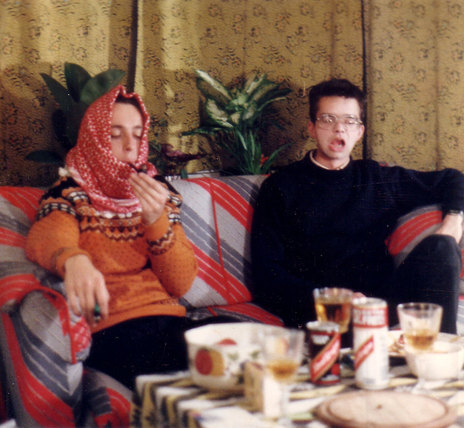
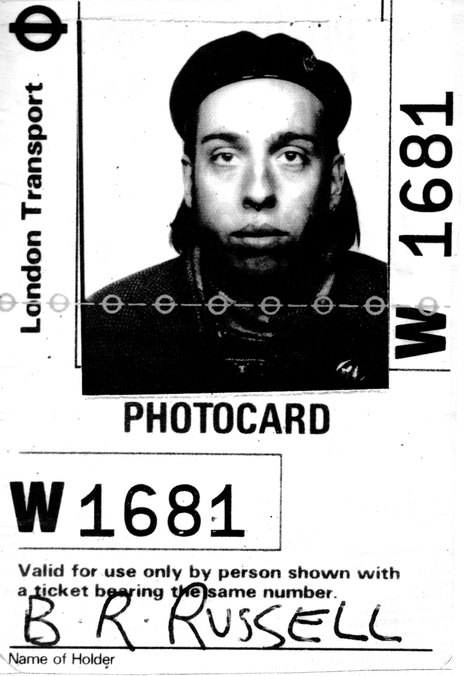
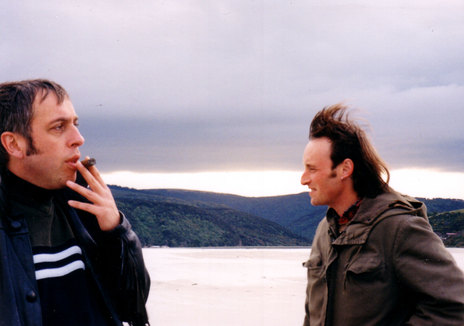
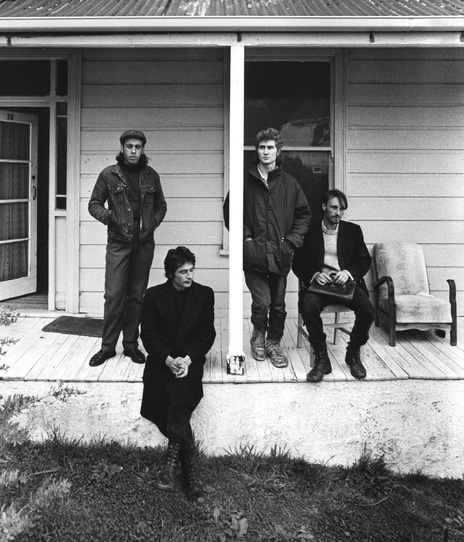
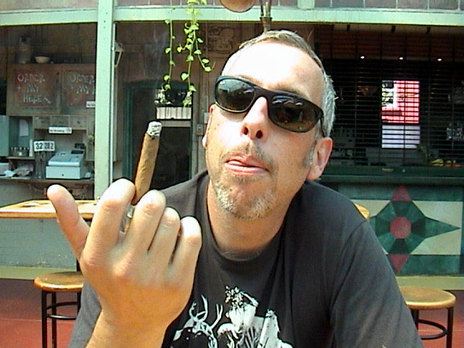
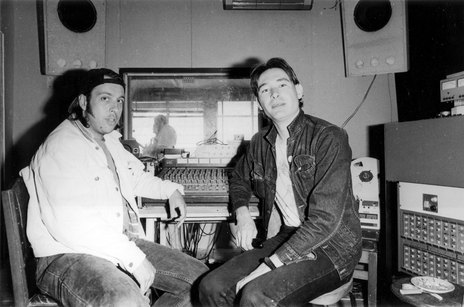
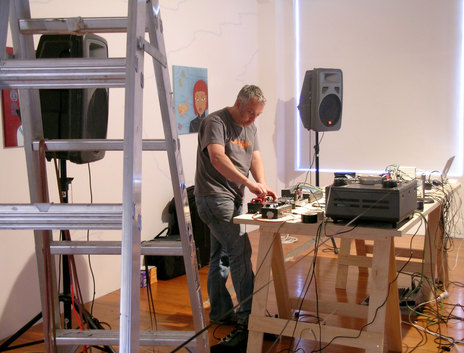
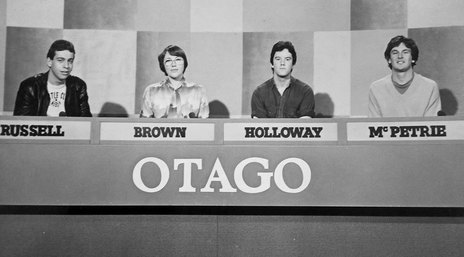
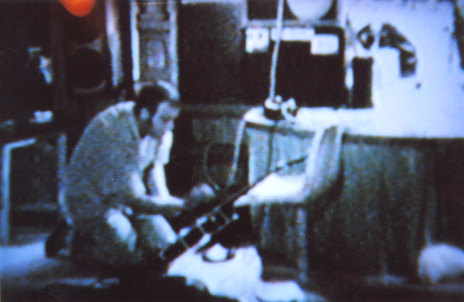
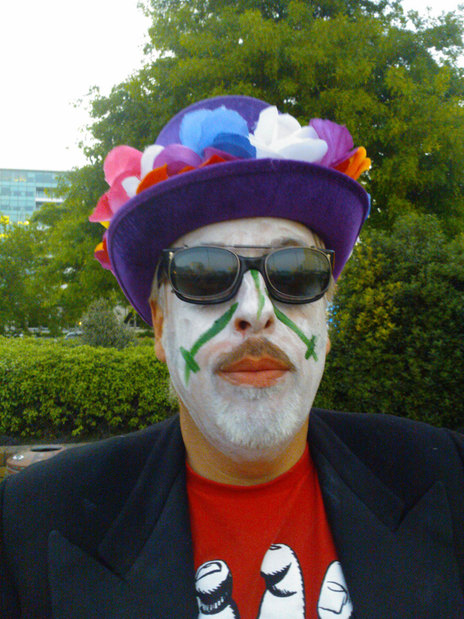
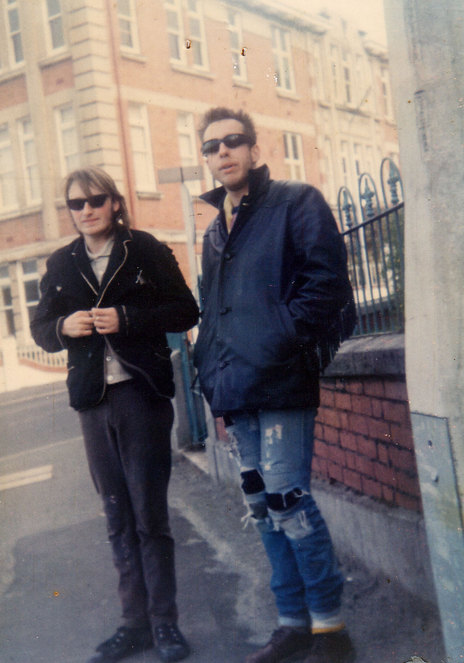
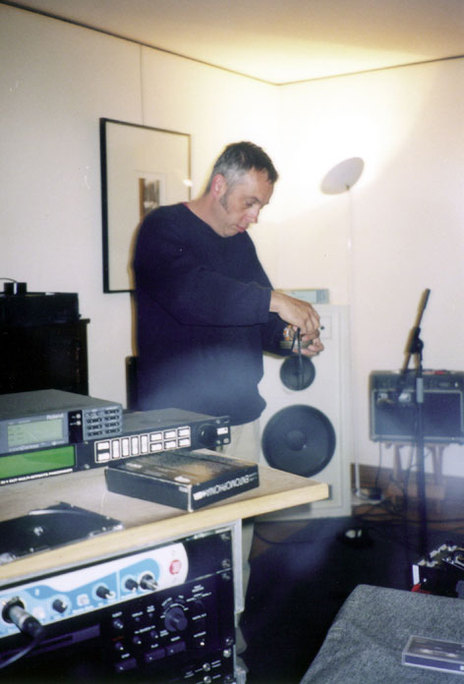
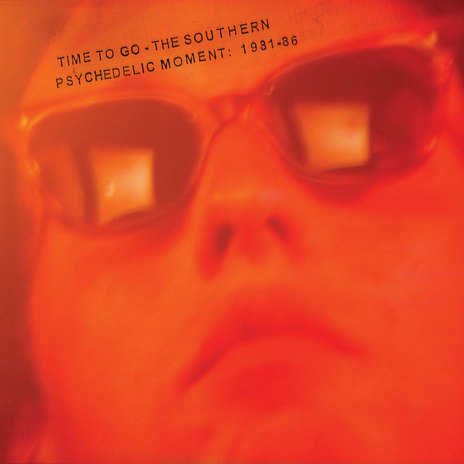
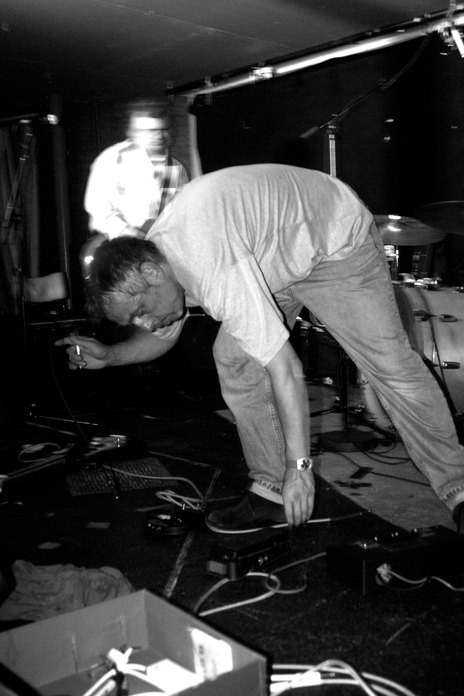
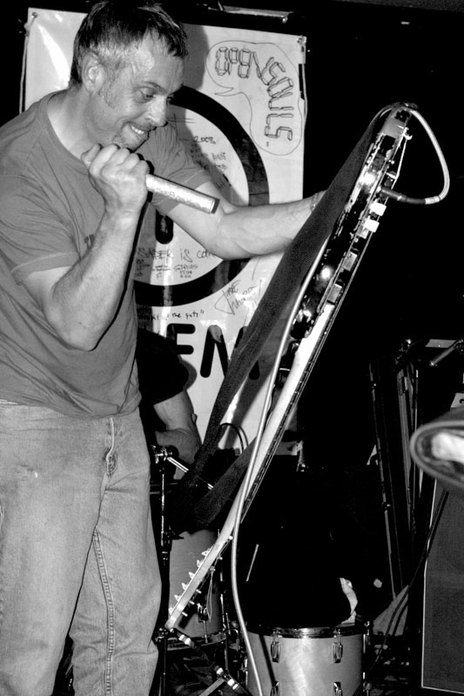
27 minutes with Mr. Noisy - Olive Russell on her Dad
Erewhon Calling: Experimental Sound in New Zealand at The Sound Foundation
Bruce Russell at PerfectSoundForever, 2000
Ba Da Bing
Siltbreeze
Next Best Way
Cmr
Freeway Sound
Twisted Village
Azul Discográfica
Imminent Frequencies
Alone At Last
Celebrate Psi Phenomenon
Crank Automotive
Grapefruit
The Spring Press
Visit our sister site
NZ On ScreenMade with funding from
NZ On Air




